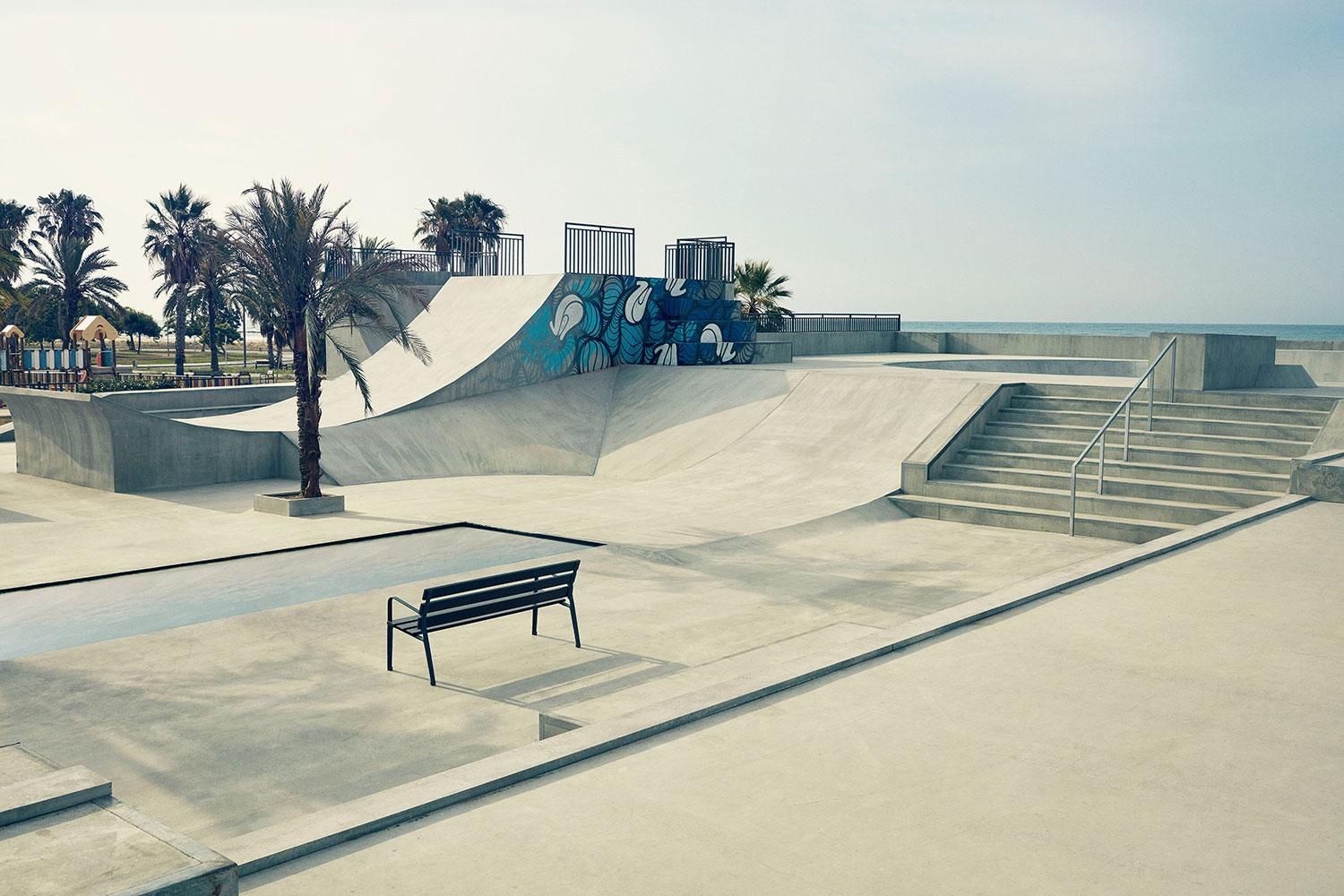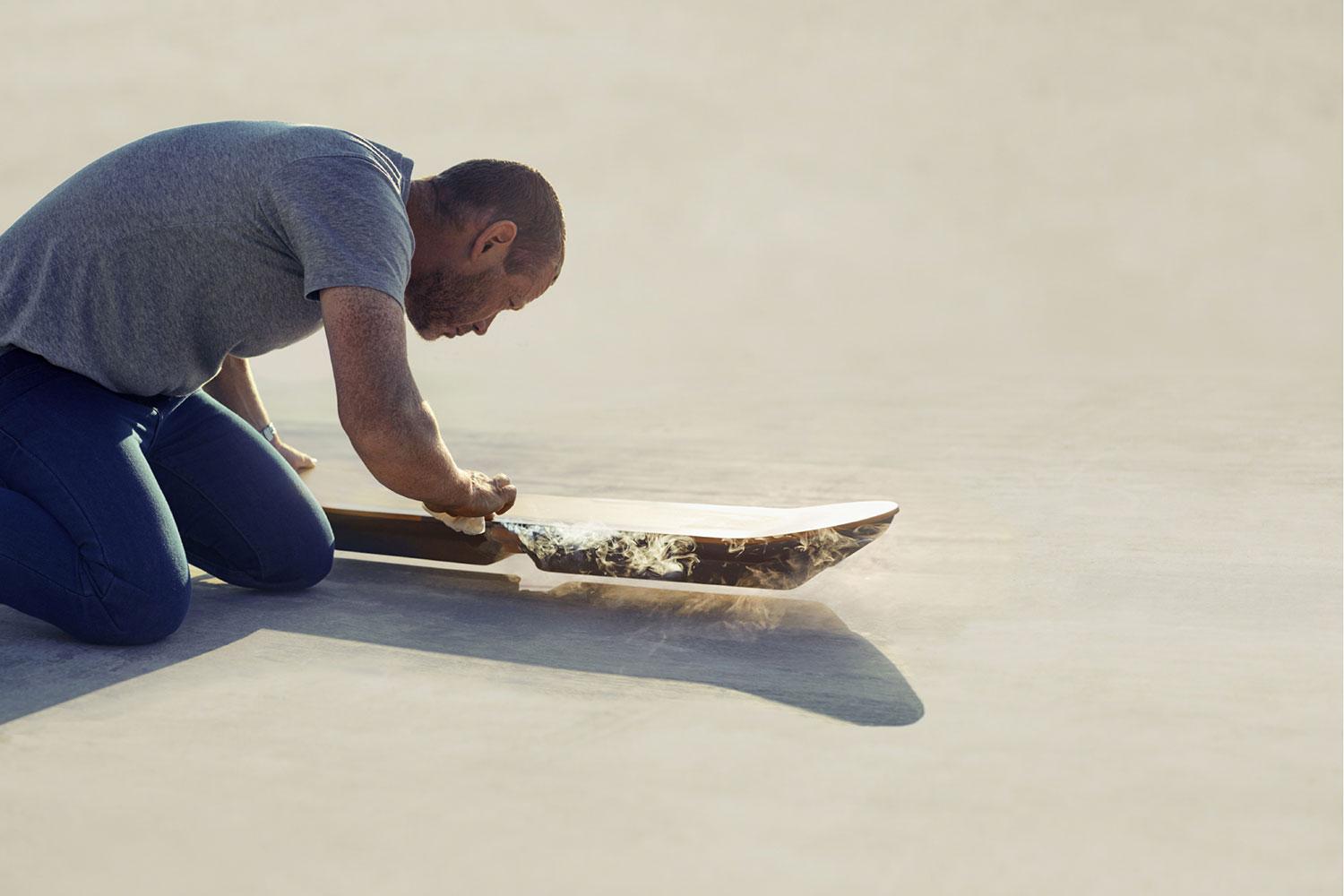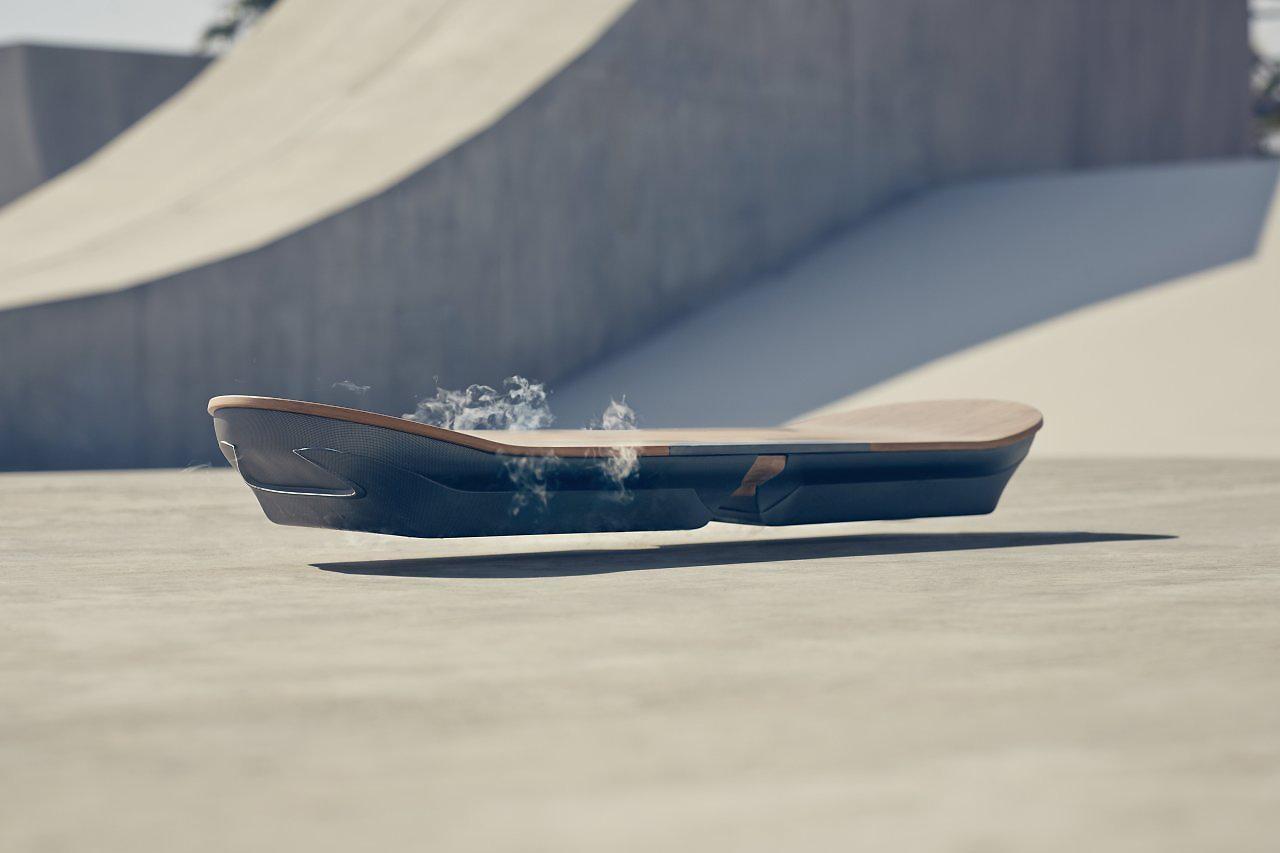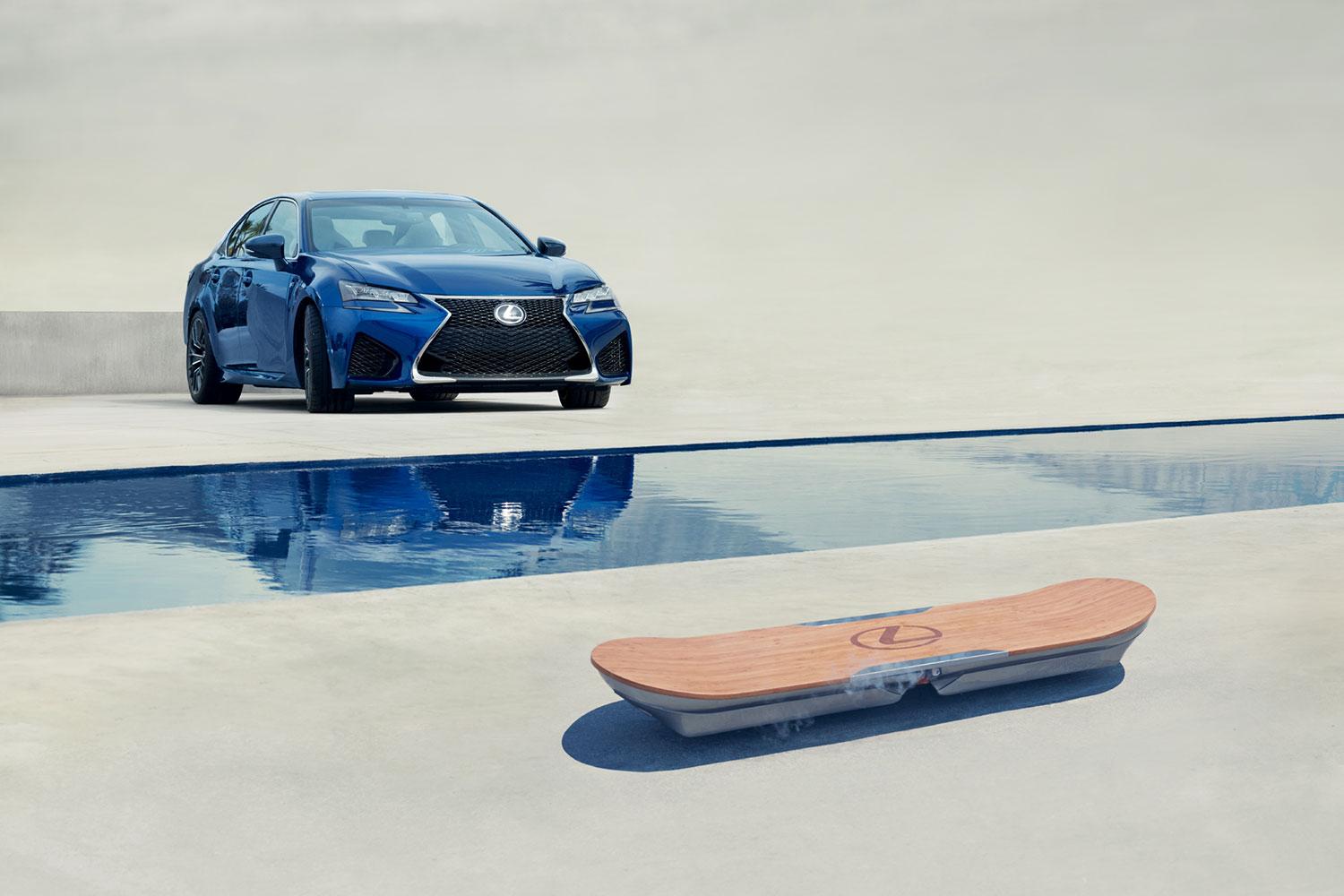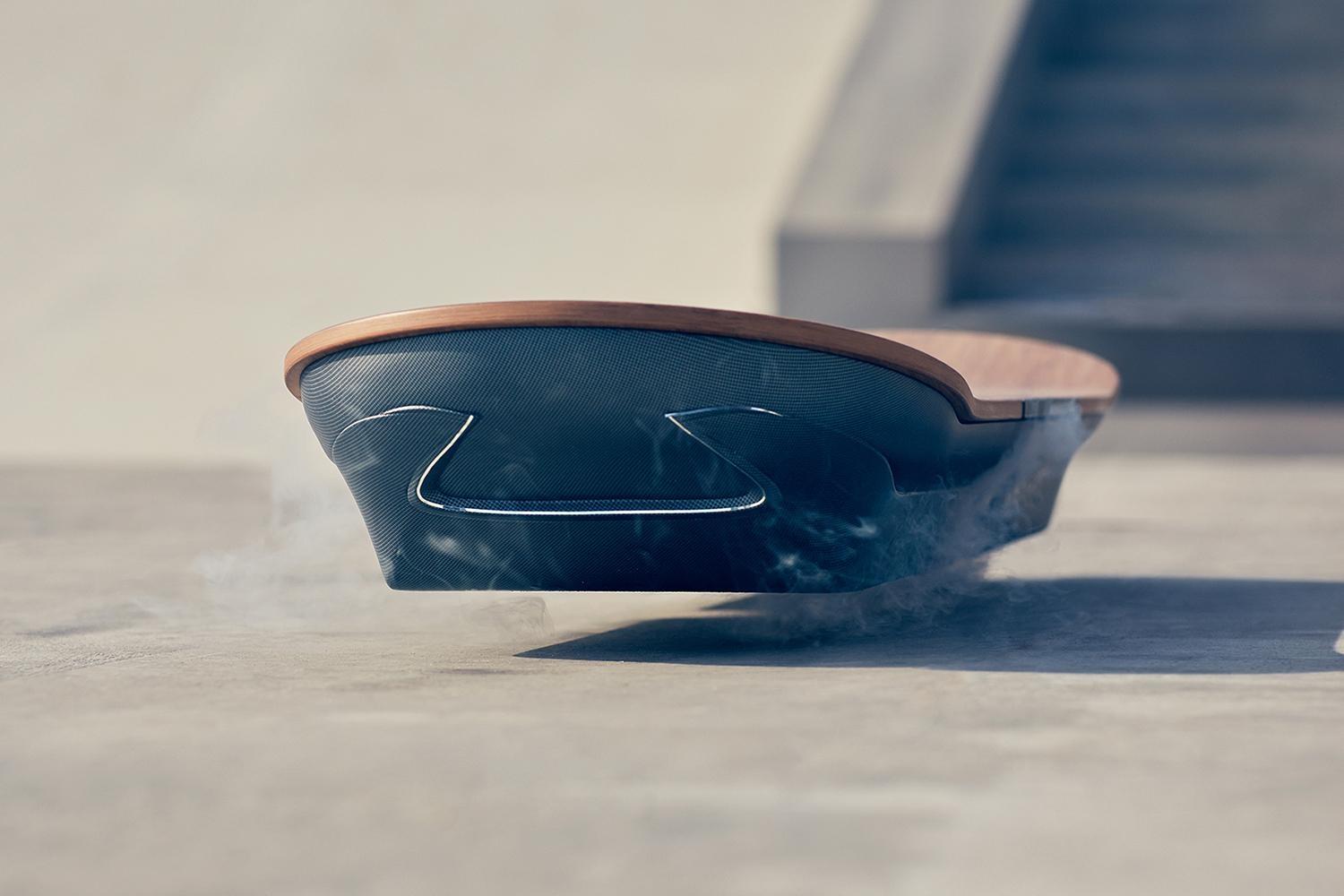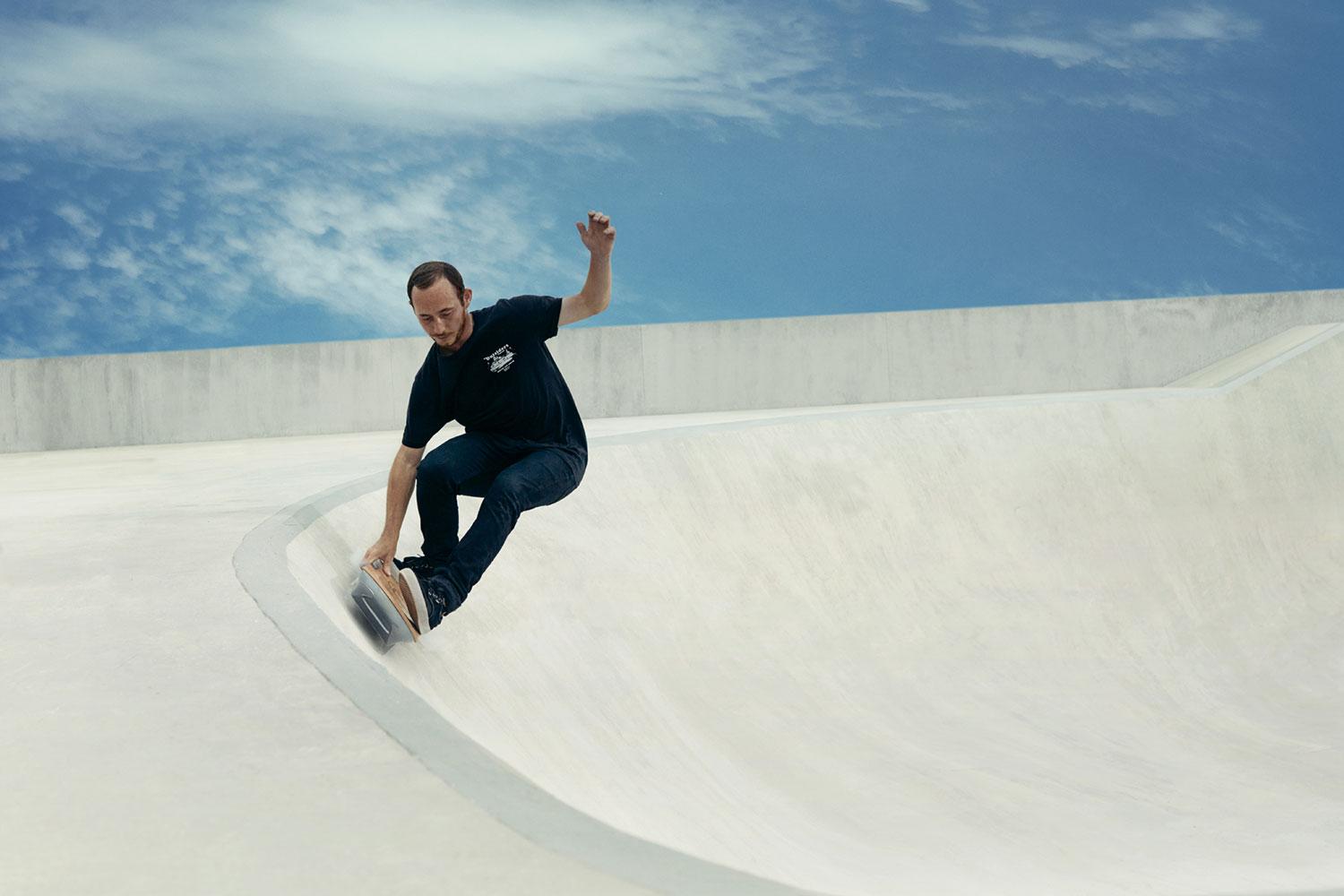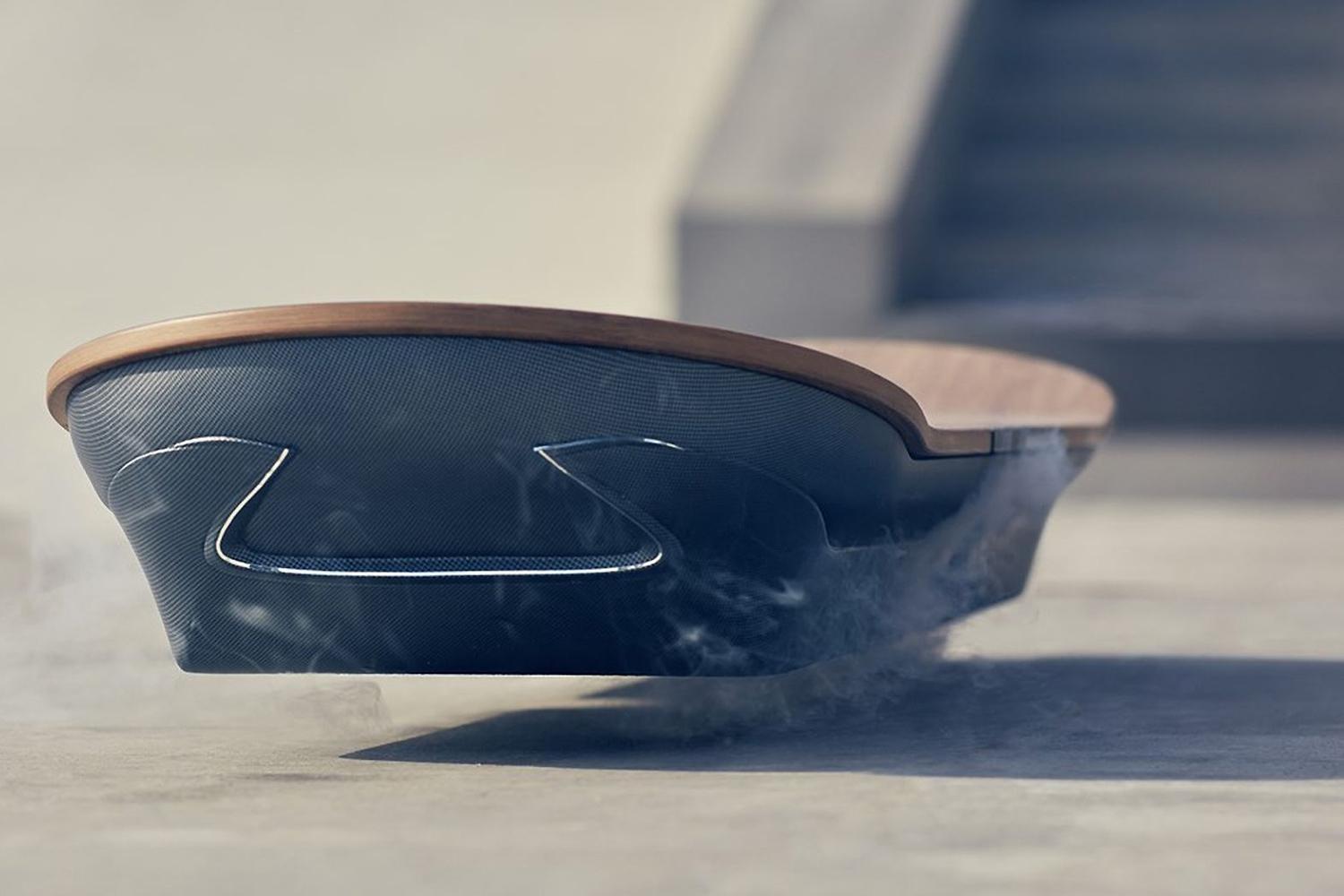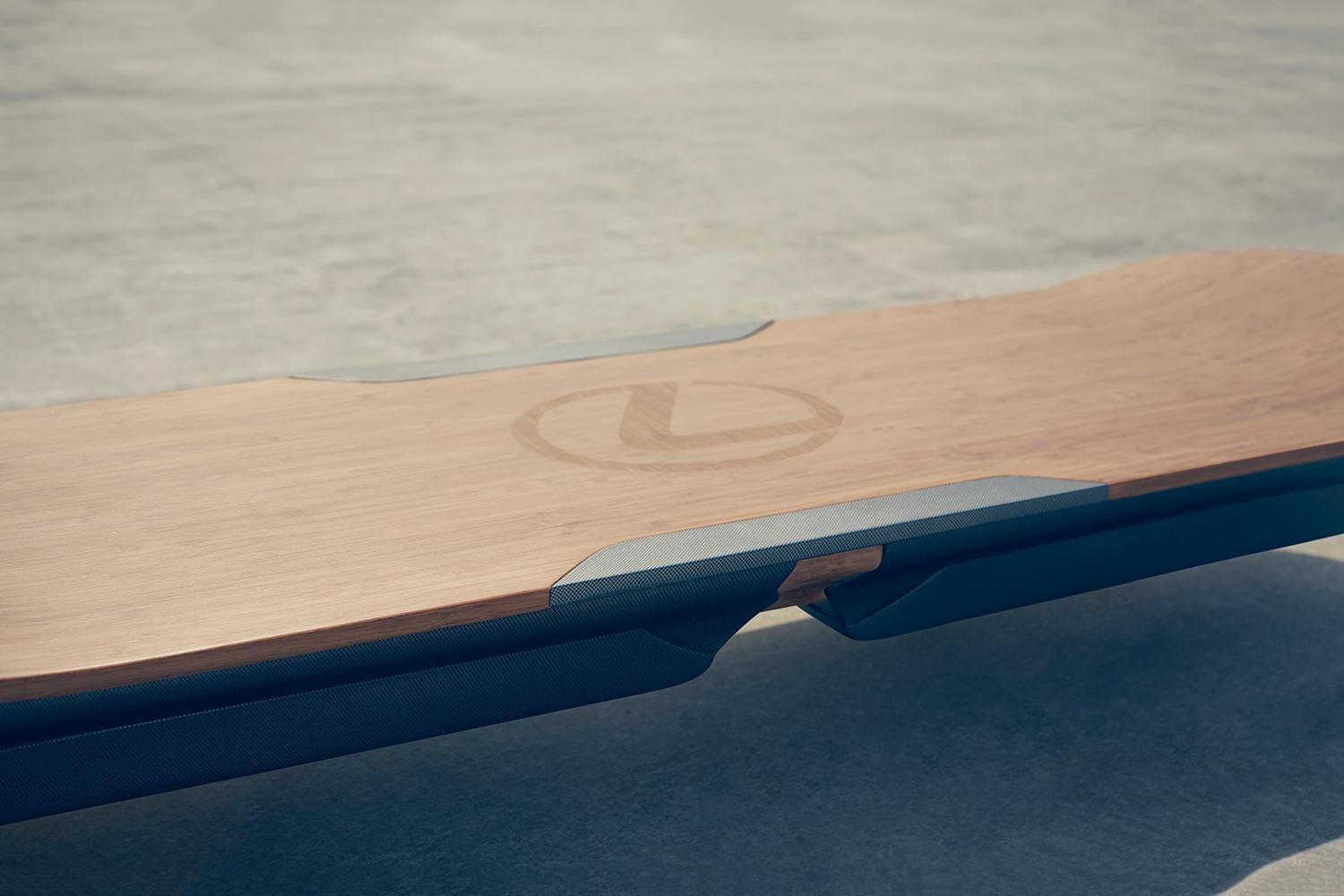Following the unveiling of its sensation-making hoverboard in June, Lexus is talking more about the futuristic Slide levitating device.
The luxury brand says it recently completed testing of the hoverboard at a specially-built “hoverpark” in Cubelles, Barcelona, in Spain. The board is only for demonstration purposes, the company says, but it really does hover. Given the right conditions, that is.
As previously described by Lexus, the board uses magnetic levitation to do its thing. Liquid nitrogen cools superconductors embedded in the board to -197 degrees Fahrenheit, allowing them to generate a magnetic field between the superconductors and permanent magnets mounted in the surface the board rides on.
That means you can’t take the hoverboard just anywhere you want, unless you’re willing to seed the ground with magnets first. Lexus installed about 200 meters (656 feet) of magnetic track in the test area in places that allow the hoverboard to pull off some neat stunts, like travel over water.
Magnetic levitation or “mag-lev” systems have been put to limited use for high-speed trains. Allowing the vehicle to float above a surface eliminates friction, increasing efficiency. However, the infrastructure needs of mag-lev transportation will probably limit the board’s real-world use.
The hoverboard project is part of Lexus’s “Amazing in Motion” publicity campaign, which is meant to feature cool engineering projects. Development began 18 months ago, with Lexus partnering with scientists from IFW Dresden and Evico, a firm that specializes in magnetic-levitation technology. To test-ride the board, they wrangled professional skateboarder Ross McGouran.
“It’s a whole new experience,” said McGouran. He said riding the hoverboard required getting a completely new feel for stance and balance compared to a traditional skateboard.
Lexus has no plans to sell the hoverboard or anything like it, but the project will likely continue to attract attention to the brand. After all, how many other carmakers can say they’ve built something that can skim over water like magic?
Editors' Recommendations
- Spotify finally adds real-time lyrics support to its mobile apps
- Rocket Lab shows off Rosie, its rocket-building robot
- Boston Dynamics’ Spot robot shows off its grabbing skills in new video
- Lexus unveils its first electric car, but it’s unlikely to be sold in the U.S.
- Lexus did the obvious thing and chopped the top off its flagship LC
